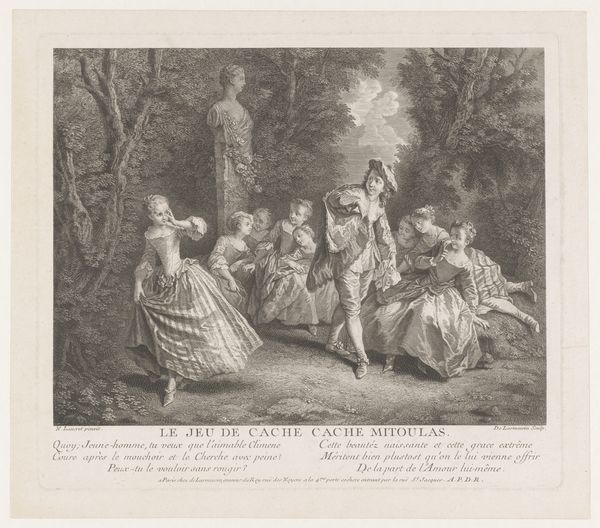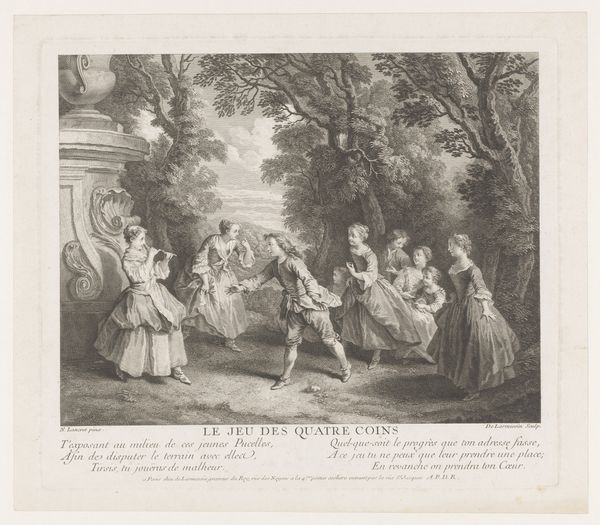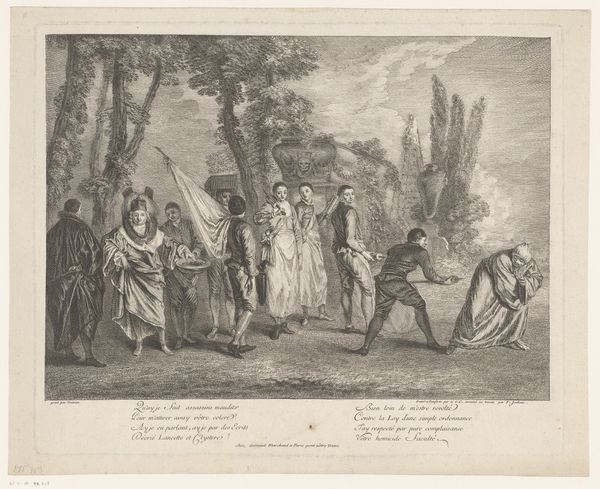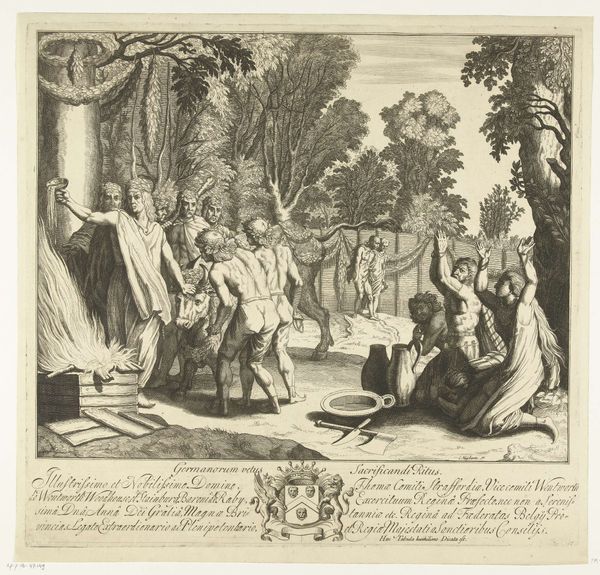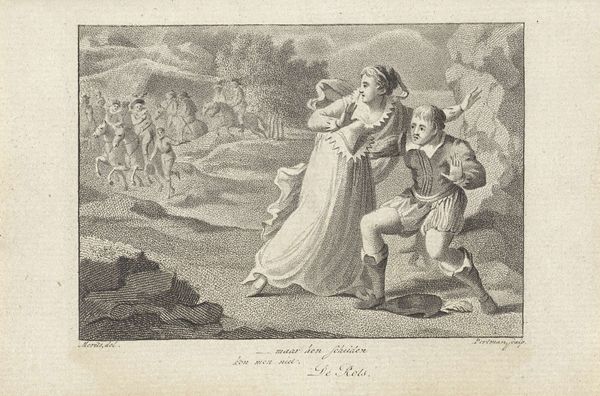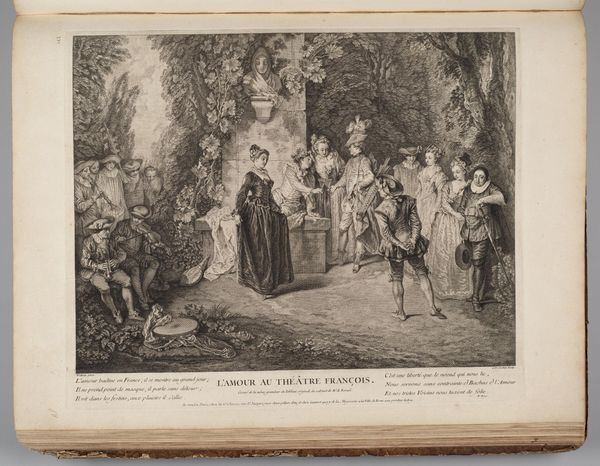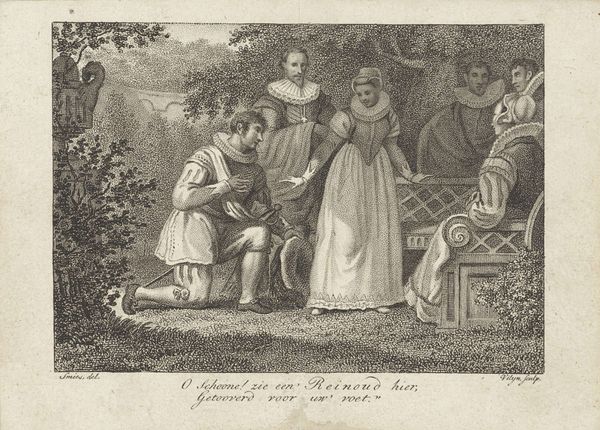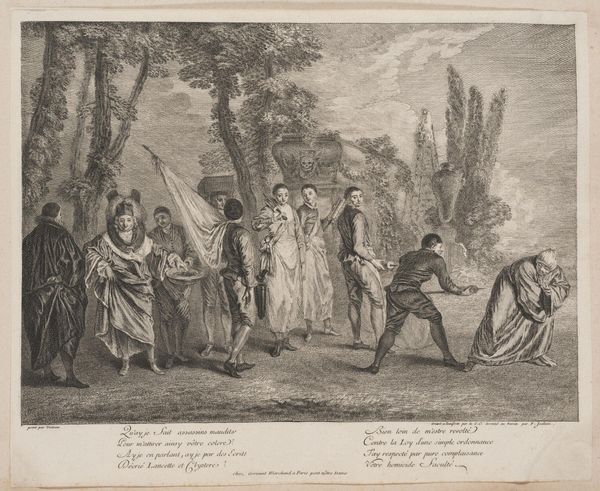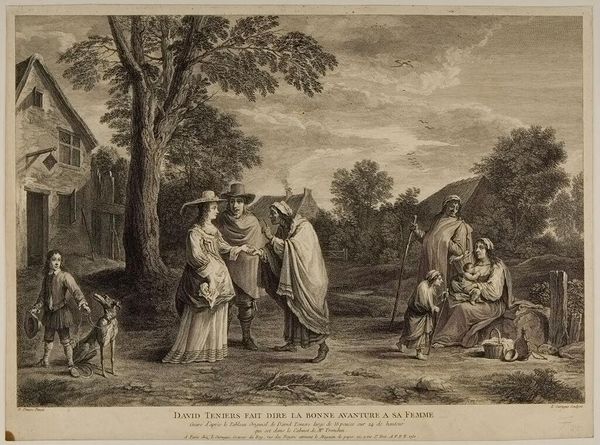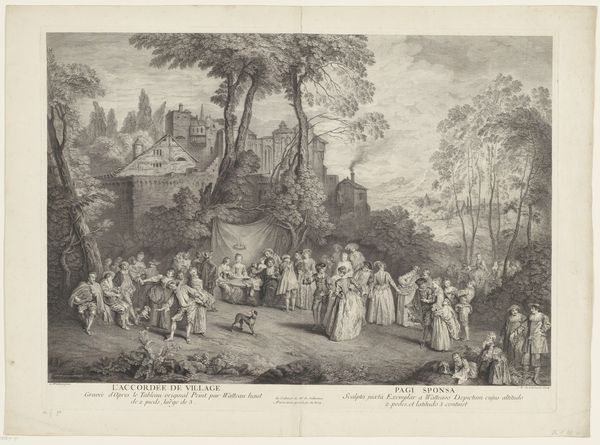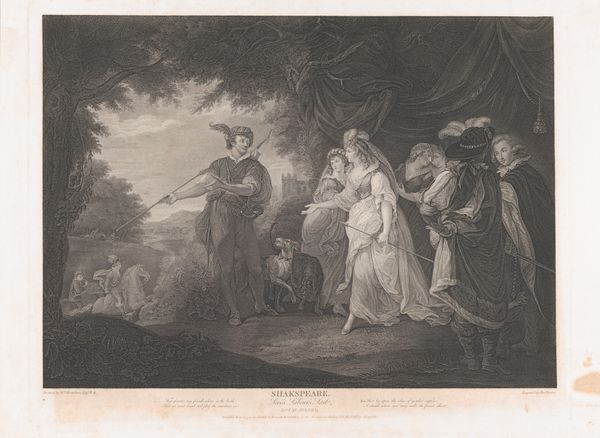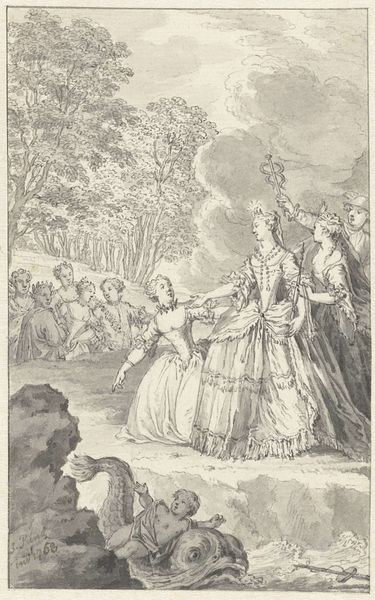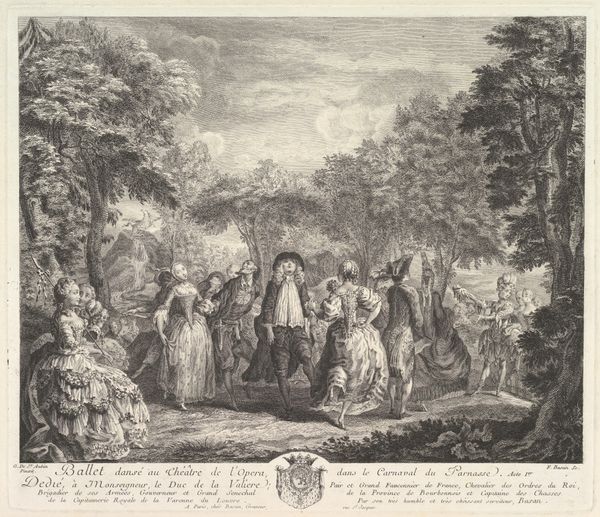
Aankomst van de herbergdochters op de bruiloft van Gamache 1696 - 1762
0:00
0:00
print, engraving
#
baroque
# print
#
old engraving style
#
landscape
#
figuration
#
pencil drawing
#
line
#
genre-painting
#
engraving
Dimensions: height 310 mm, width 331 mm
Copyright: Rijks Museum: Open Domain
Curator: Ah, a pastoral scene! Looking at this engraving, what catches your eye first? Editor: The starkness. It’s monochrome, of course, but even within that, there’s such a contrast between the heavy black lines of the trees and the delicate rendering of the figures' dresses. It feels...purposefully unbalanced. Curator: "Aankomst van de herbergdochters op de bruiloft van Gamache" (Arrival of the Innkeepers' Daughters at the Wedding of Gamache) by Louise Magdeleine Horthemels. It’s interesting to consider the social function of prints like this. How they served to disseminate imagery, class aspirations. Editor: Innkeepers' daughters, you say? You wouldn't guess that from the way they are dressed, so fancy. Look at those sleeves. All that material and decoration—the process of making clothes at that level suggests real expense of both resources and time. Someone had to spin that yarn, weave the fabric, embroider. And now here they are at Gamache’s wedding! Curator: These engravings circulated widely. For those who couldn’t afford original paintings, prints offered access, or at least the illusion of access, to fashionable life and narratives. The scene depicted draws upon a specific story that would have resonated with audiences of the time. And consider the Horthemels family workshop, producing these for public consumption. Editor: So, in some ways, it’s an early form of mass media? This image itself would have participated in shaping desires. I keep coming back to the making—engraving is a pretty physical job, transferring the artist’s intention into reproducible lines with specialized tools. Curator: Precisely. And how those lines then shaped the visual landscape and understanding of countless viewers! The very act of distributing imagery solidified societal norms, romanticized the past... Editor: To own a print, you bought into the world it was propagating... even if only on a small scale. A small material claim to a larger social picture. I see how the social implications start from the choice of materials. Curator: Yes, it truly makes one reflect upon the socio-political context shaping not only the print's production but also its subsequent reception. Editor: And for me, the material traces always point back to the people: the artist, engraver, patron and consumer, as much as the subjects they portrayed. Thanks for this historical backdrop. Curator: Likewise, it is important to bring to light the social influence the print had, not just the physical qualities and form of it.
Comments
No comments
Be the first to comment and join the conversation on the ultimate creative platform.
